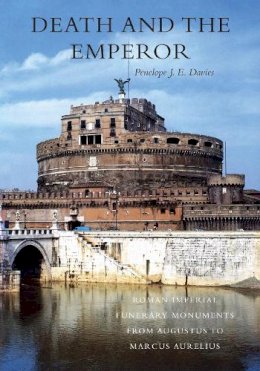
Stock image for illustration purposes only - book cover, edition or condition may vary.
Death and the Emperor: Roman Imperial Funerary Monuments from Augustus to Marcus Aurelius
Penelope J. E. Davies
€ 48.75
FREE Delivery in Ireland
Description for Death and the Emperor: Roman Imperial Funerary Monuments from Augustus to Marcus Aurelius
Paperback. Presents studies of Roman imperial cult, political propaganda, and topography. Num Pages: 281 pages, 117 b&w photos and line drawings. BIC Classification: 1QDAR; JHBZ. Category: (P) Professional & Vocational. Dimension: 253 x 177 x 16. Weight in Grams: 524.
The role of monuments in the Roman imperial cult.
The role of monuments in the Roman imperial cult.
Product Details
Publisher
University of Texas Press
Number of pages
281
Format
Paperback
Publication date
2004
Condition
New
Number of Pages
281
Place of Publication
Austin, TX, United States
ISBN
9780292702752
SKU
V9780292702752
Shipping Time
Usually ships in 7 to 11 working days
Ref
99-50
About Penelope J. E. Davies
Penelope J. E. Davies is Associate Professor of Roman Art and Architecture at the University of Texas at Austin. Her book Death and the Emperor was first published by Cambridge University Press in 2000. It won the Vasari Award, sponsored by the Dallas Museum of Art.
Reviews for Death and the Emperor: Roman Imperial Funerary Monuments from Augustus to Marcus Aurelius
Davies sets out to ask, How did the Romans bury Caesar? And with what monuments did they sing his praises? . . . The architectural elaboration of these structures, their siting in the capital, the lines of vision and approaches that exposed them to view, the paths their complex outworks formed for visitors to walk, are all picked out with skill and presented with care in Death and the Emperor.
Times Literary Supplement
This concise and lucidly written book is a very valuable new contribution to the studies of Roman imperial cult, political propaganda, and topography, and has the added benefit of discussing complex scholarly disputes in a manner that the non-specialist will probably follow with ease. . . . There is material in this volume that will be immensely useful to researchers in many areas: archaeology, history of architecture, iconography, history of religion, and Roman political propaganda, to name just a few. I strongly recommend it to scholars interested in any or all of the above topics.
Bryn Mawr Classical Review
Even though its focus is on only seven specimens of architecture, the book touches upon a broad array of aspects of Roman imperial culture. Elegantly written and generously illustrated . . . this book should be of great interest to the general public as well as to the scholarly community.
American Journal of Archaeology
Times Literary Supplement
This concise and lucidly written book is a very valuable new contribution to the studies of Roman imperial cult, political propaganda, and topography, and has the added benefit of discussing complex scholarly disputes in a manner that the non-specialist will probably follow with ease. . . . There is material in this volume that will be immensely useful to researchers in many areas: archaeology, history of architecture, iconography, history of religion, and Roman political propaganda, to name just a few. I strongly recommend it to scholars interested in any or all of the above topics.
Bryn Mawr Classical Review
Even though its focus is on only seven specimens of architecture, the book touches upon a broad array of aspects of Roman imperial culture. Elegantly written and generously illustrated . . . this book should be of great interest to the general public as well as to the scholarly community.
American Journal of Archaeology
